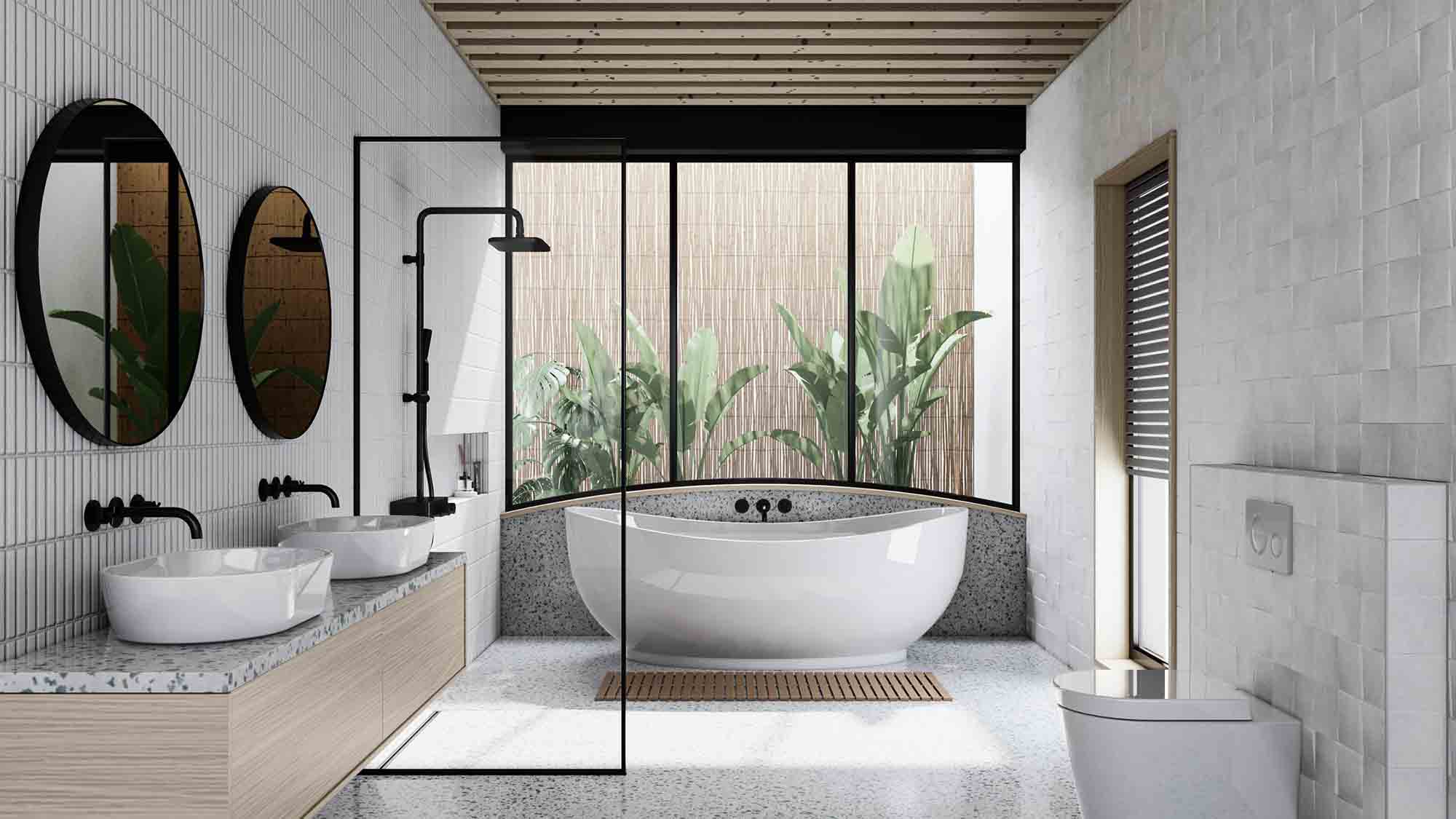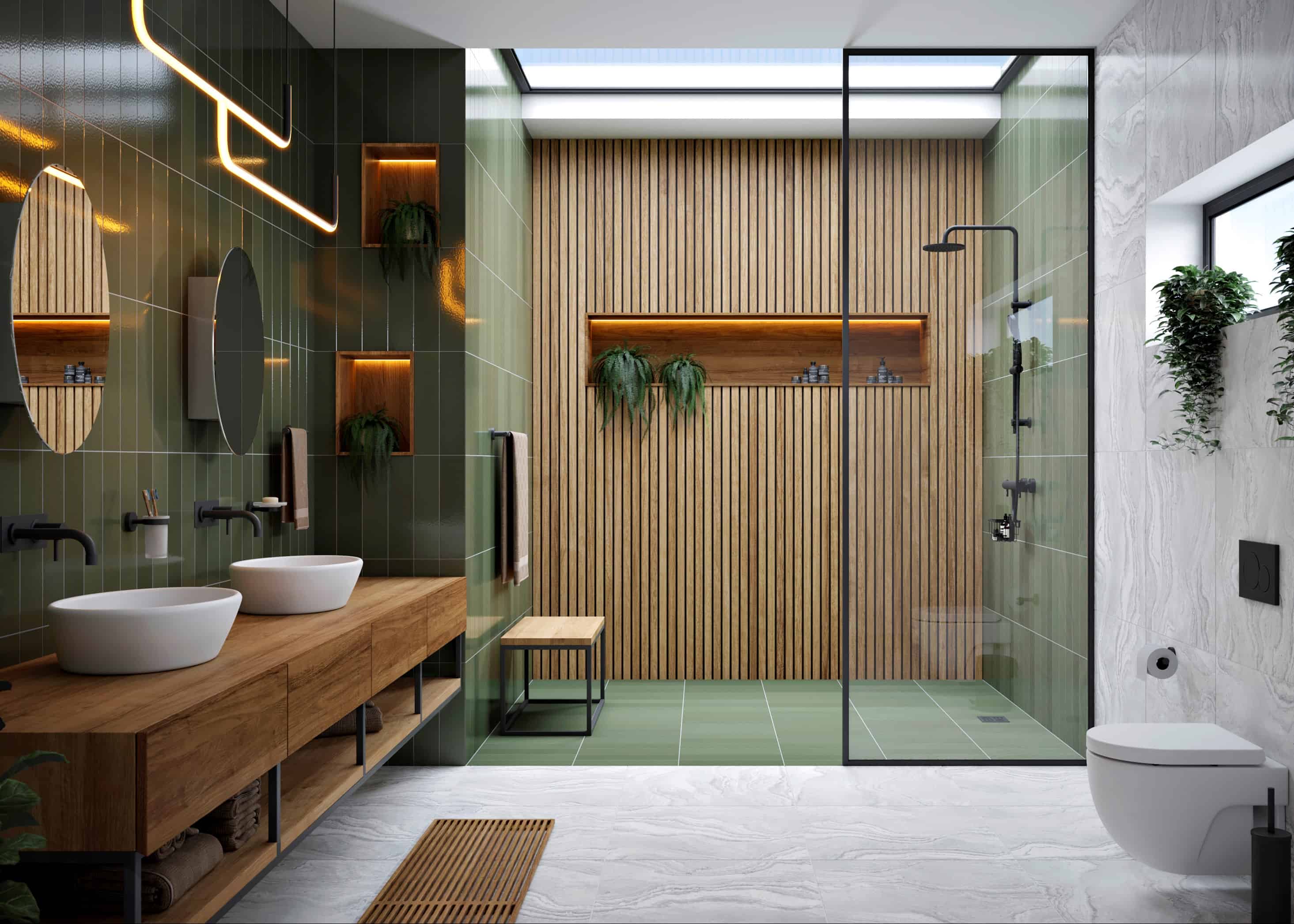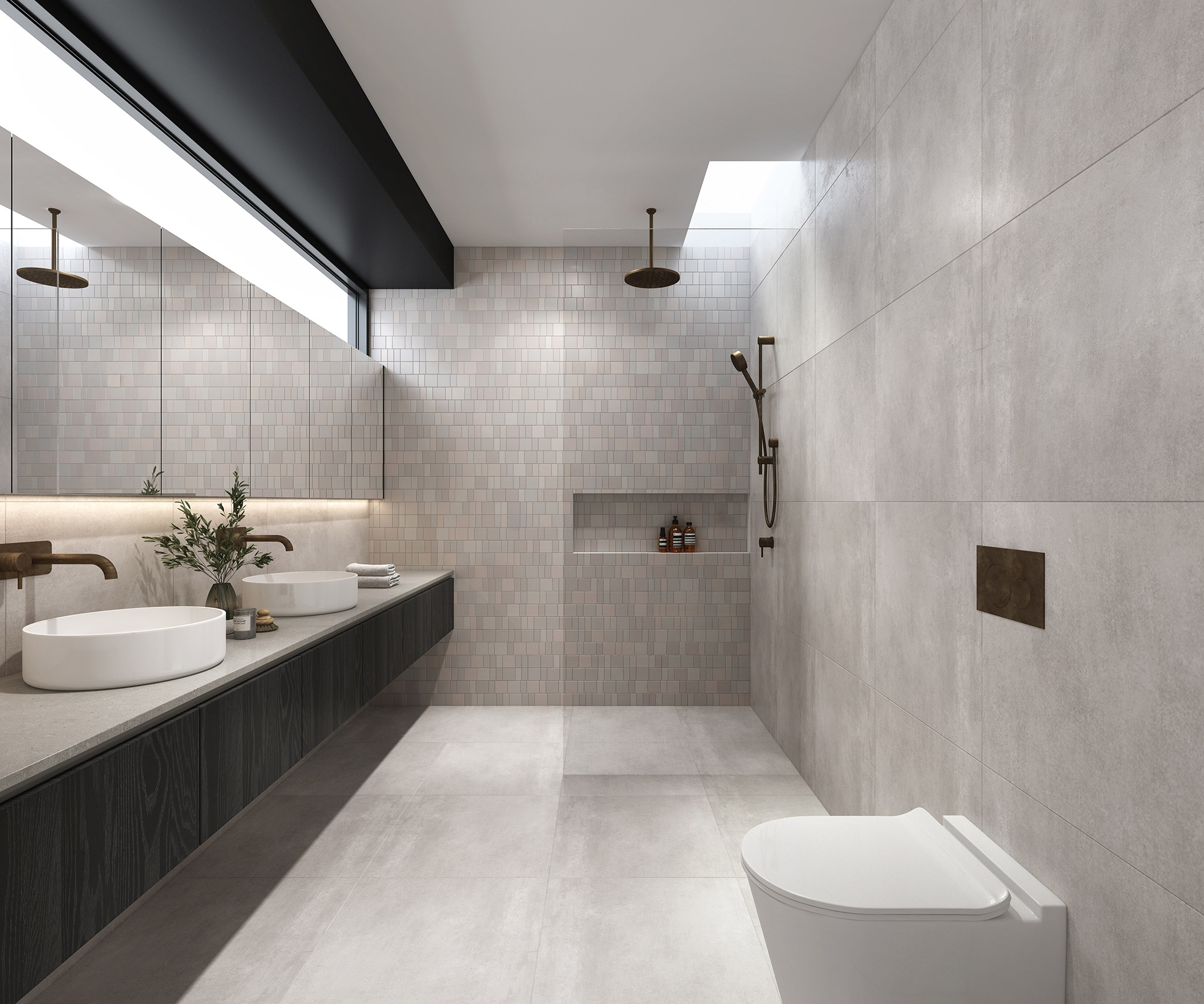Surface Preparation

How to render a bathroom wall – Preparing the wall surface before rendering is crucial to ensure a smooth, durable finish. It involves removing any existing coatings, repairing any defects, and cleaning the surface to remove dirt and debris.
Rendering a bathroom wall requires careful planning and precision, just like designing the interior of a cafeteria. Cafeteria interior design involves creating a functional and inviting space, similar to the purpose of a well-rendered bathroom wall, which enhances the overall aesthetic and practicality of the space.
Follow these steps for thorough surface preparation:
Removing Old Paint or Wallpaper
- Use a paint scraper or wallpaper steamer to remove old paint or wallpaper.
- If using a steamer, be careful not to damage the underlying wall surface.
- Once the old coating is removed, sand the surface to smooth any rough edges.
Repairing Holes or Cracks
- Fill small holes or cracks with a suitable filler, such as spackling paste or drywall compound.
- For larger holes, use a patching compound or a piece of drywall.
- Allow the repairs to dry completely before sanding them flush with the wall surface.
Cleaning the Surface
- Use a damp sponge or cloth to wipe down the wall surface and remove any dust or debris.
- If the wall is particularly dirty, you may need to use a mild detergent solution.
- Allow the surface to dry completely before applying the render.
Choosing the Right Rendering Materials: How To Render A Bathroom Wall

The choice of rendering material for a bathroom wall depends on several factors, including the condition of the wall, the desired finish, and the level of moisture and humidity in the bathroom.
There are three main types of rendering materials available: cement-based, acrylic-based, and silicone-based.
Cement-based Rendering, How to render a bathroom wall
Cement-based rendering is a mixture of cement, sand, and water. It is the most common type of rendering used for exterior walls, but it can also be used for interior walls, including bathrooms.
Pros:
- Durable and long-lasting
- Fire-resistant
- Moisture-resistant
- Relatively inexpensive
Cons:
- Can be difficult to apply
- Can crack if not applied properly
- Not as flexible as other types of rendering
Acrylic-based Rendering
Acrylic-based rendering is a mixture of acrylic resin, sand, and water. It is a more flexible type of rendering than cement-based rendering, and it is easier to apply.
Pros:
- Flexible and crack-resistant
- Easy to apply
- Available in a wide range of colors
- Moisture-resistant
Cons:
- Not as durable as cement-based rendering
- More expensive than cement-based rendering
- Can be damaged by UV rays
Silicone-based Rendering
Silicone-based rendering is a mixture of silicone resin, sand, and water. It is the most expensive type of rendering, but it is also the most durable and flexible.
Pros:
- Very durable and flexible
- Waterproof and moisture-resistant
- Resistant to UV rays
- Easy to clean
Cons:
- Very expensive
- Can be difficult to apply
- Not as breathable as other types of rendering
| Property | Cement-based | Acrylic-based | Silicone-based |
|---|---|---|---|
| Durability | High | Medium | High |
| Flexibility | Low | High | High |
| Moisture resistance | High | Medium | High |
| Cost | Low | Medium | High |
| Ease of application | Difficult | Easy | Difficult |
Application Techniques

Applying rendering to a bathroom wall requires careful preparation and execution to achieve a smooth and even finish. This section will provide detailed instructions on the proper techniques for mixing the materials, applying the first coat, and finishing the surface.
Mixing the Materials
Before applying the rendering, it is essential to mix the materials thoroughly according to the manufacturer’s instructions. Typically, this involves mixing a pre-mixed render with water using a slow-speed drill and paddle mixer. The consistency of the mix should be smooth and workable, not too thick or too thin.
Applying the First Coat
Once the materials are mixed, apply a thin, even coat of rendering to the wall using a trowel or float. Start from the bottom of the wall and work your way up, ensuring that the render is applied evenly and smoothly. Use a spirit level to check for any uneven areas and correct them as needed.
Finishing the Surface
After the first coat has dried, apply a second coat of rendering to the wall. This coat should be thicker than the first and should be applied with a trowel or sponge float. Use circular motions to create a smooth and even finish. Allow the second coat to dry completely before applying any paint or other finishes.
To achieve a sleek and durable finish for your bathroom walls, rendering is a practical solution. With its ability to withstand moisture and create a seamless surface, rendering provides a long-lasting and stylish upgrade. While considering your bathroom’s aesthetic, you may find inspiration in the vibrant and captivating ronaldo hd wallpaper.
The intricate details and bold colors of this wallpaper can spark ideas for creating a bathroom wall that is both functional and visually stunning. As you plan your rendering project, keep in mind the practical aspects, such as choosing the right materials and ensuring proper ventilation, to ensure a successful and transformative renovation.